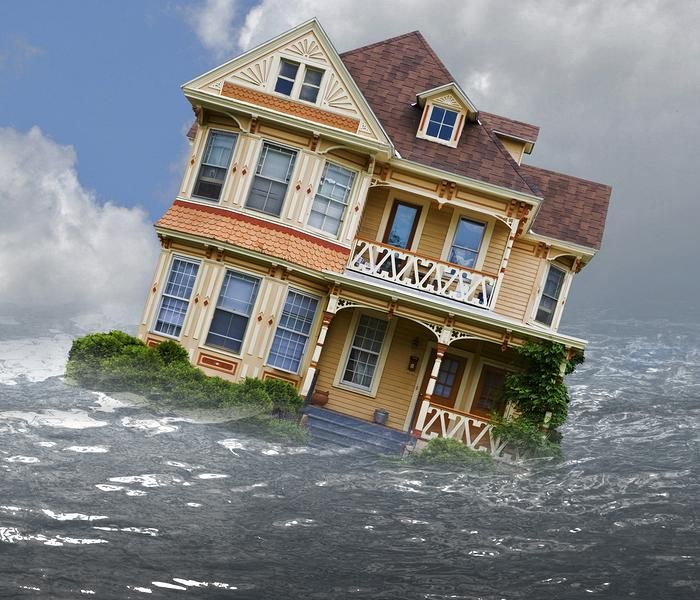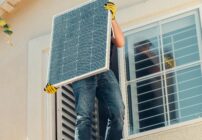Water is great. We need it to survive, after all. But sometimes it isn’t exactly our best friend. In fact, when it shows up in the wrong place and in large quantities, it can be extremely disastrous. And this is very true when it comes to our homes.
Water damage is often underestimated by many people. They underestimate the likelihood that it will occur to their home, but they also underestimate the sheer havoc it can cause if it does actually occur.
It’s important that homeowners and families are aware of just how bad water damage can be. We’re going to take a quick look at the ways in which severe water damage can occur to most homes in the United States, as well as the ways in which it should be dealt with.
Too much moisture
The most common form of water damage is actually one of the most common home problems in the United States – and it occurs quite slowly and sneakily. It’s almost stealthy. A lot of the water in your home that you need to worry about isn’t actually water you can see most of the time. It’s hanging around in your air, undetected. When it touches a cold enough surface, it condenses and causes drips. You’ve probably seen it on your windows.
This can damage the cosmetics of your home, but the problem can get much worse than that. Severe structural problems can occur if moisture in the home is left untreated. Molds will start to form and the wooden frames of your home will start to get weaker. If you can see moisture or mold on your windowsills, skirting, or in the corners and ceiling, then you’ve got a problem.
Inadequate plumbing
Probably the most famous cause of massive water damage is busted pipes. The problem with busted pipes is that there’s often little indication that there’s anything wrong until they actually break open and cause some sort of flood. People often forget about their plumbing; after all, we don’t usually see it. We just sort of take its functioning for granted.
There are a few telltale signs of broken or faulty pipes, however. And if you don’t take action when you start to notice the signs, you could risk seeing some severe water damage in both the main internal body of your home as well as throughout its infrastructure. Strange noises, unpleasant smells, damp areas, persistent clogging, poor water quality, and a disproportionately high water bill can all be signs that something has gone seriously wrong with your plumbing.
Heavy rain
A lot of people like heavy rain. (As long as they’re able to enjoy its sights and sounds from inside their home, of course!) They love to listen to all that water patter against the windows and their roof. The problem, of course, is that you’re not always fully protected from the rain just because you’re inside your house. After all, what’s protecting your house from all that rain?
Really heavy rain can cause all kinds of chaos. Flooding is obviously a problem if things get really bad, but this generally only affects people in certain areas. For the most part, that rain causes damage to the roof. If your roof is getting a bit weak, and the draining around it isn’t sufficient, then all that water will only weaken it further. Plus, it will probably let in a lot of that water, which will end up leaking into your infrastructure.
Where to check for problems
If you want to protect your home against severe water damage, then you really need to keep a close eye on the most vulnerable areas of the home throughout the year. The common problems that were listed above do come with a lot of obvious areas to keep an eye on; the roof, for example, is a very vulnerable area. It’s better to get a contractor to look at things, though – even if you trust yourself to keep your footing, it’s so much safer to let a professional do it! Check the ceilings in your home that are closest to the roof, as well as the attic.
As for the major problem areas when it comes to plumbing, you should check under the sink frequently. Inspecting the areas around facilities with heavy water usage is also recommended; think dishwashers and washing machines. And, again, windowsills, skirting, and wall corners are good places to check for vapor problems.
If water damage occurs
If you’ve already had heavy water damage on your property, then you need to get it seen to right away. Even something as seemingly minor as damp and mold as a result of vapor needs to be seen to as soon as possible; after all, mold in your home is extremely unsafe. Get the affected areas properly treated; scraping off the mold and giving the area a quick wash probably won’t cut it.
If the water damage is extensive, and has actually broken things or caused flooding, then you need to get this resolved right away. The prolonged presence of the water will continue to damage your home further, and larger amounts of damage will breed larger amounts of mold. A restoration service such as Restorationeze is recommended if you need experts to resolve the problem.
What about insurance?
If we’re talking about water damage in the home, then we may as well bring up home insurance. Again, water damage is one of the most common causes of extensive home damage. Unfortunately, many insurance plans actually don’t cover water damage at all. And if they do, the vast majority will only cover some instances of water damage.
There are generally two categories in the eyes of insurers. One is water damage caused by faulty or damaged utilities. How much of a hand human error had in the resultant damage will, of course, come into play. If you busted a pipe with an ill-aimed nail while renovating your bathroom, the insurers won’t look too kindly upon the problem. There’s also water damage as a result of natural flooding. You’ve also got to make sure any insurance for water damage covers not only the building itself, but also the items within it. Make sure you research your insurance policy thoroughly – don’t make any assumptions!
Related Posts
- Does Your Home Need a Health Check?
A lot of us don’t think of our property as problematic to our health. After…
- Fantastic Fall Recipes That Your Family Will Love
Fall has set in already!! The light drizzle combined with a chill in the air…
- How Does Your LEGO Family Look Like?
I am sure all of you have started buying Christmas presents and started making Holiday…



















